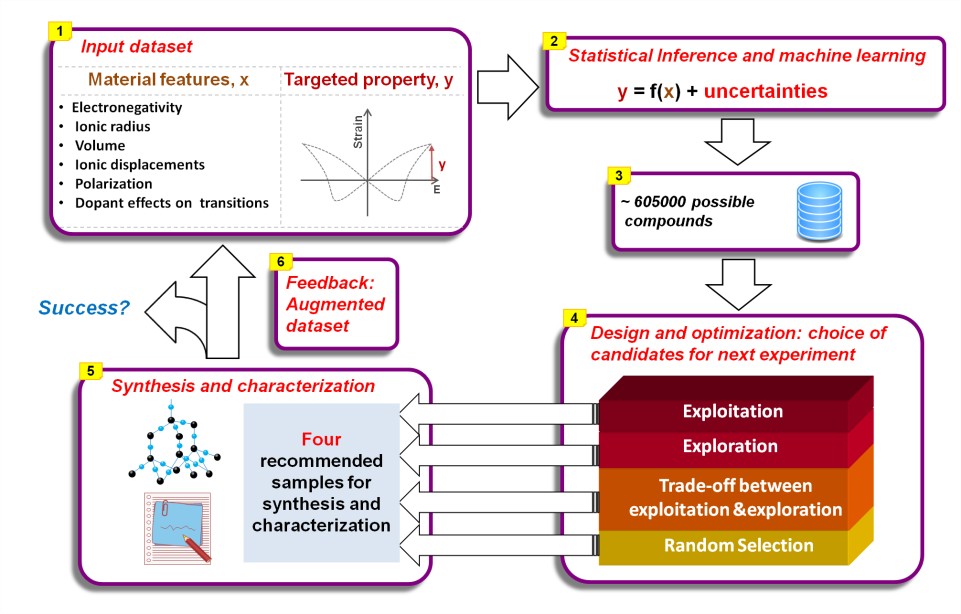Researchers recently demonstrated how an informatics-based active learning strategy, tightly coupled to experiments, can accelerate the discovery of new piezoelectric materials, according to a recent paper published in Advanced Materials.
Finding new materials with targeted properties with as few experiments as possible is a key goal of accelerated materials discovery. The enormous complexity due to the interplay of structural, chemical, and micro-structural degrees of freedom in materials makes the rational design of new materials with targeted properties rather difficult.

Accelerated materials development using adaptive design
Machine learning for solving complex problems is being adapted for the design of new materials. The machine learning algorithms effectively learn from past data and build an inference model relating the targeted property to material descriptors. The targeted properties of unexplored materials are then estimated, leading to the rational choice of the next experiment or calculation.
Researchers from Xi’an Jiaotong Unverisity and Los Alamos National Lab used machine learning and optimization tools to guide the synthesis of new BaTiO3 based piezoelectrics with large electrostrains. They discovered of the compound, (Ba0.84Ca0.16)(Ti0.90Zr0.07Sn0.03)O3 after only three iterations, which has the largest strain of any lead free compound. They compared experimentally how different predictive approaches behave as new compounds are synthesized and characterized. One particular approach, which balances the trade off between exploration – using uncertainties to efficiently explore the vast search space - and exploitation of the inference model performs best.
The research is published in an article entitled "Accelerated Discovery of Large Electrostrains in BaTiO3-Based Piezoelectrics Using Active Learning", which was published online in the Advanced Materials. The work was completed by Doctoral student Ruihao Yuan and Associate Prof. Dezhen Xue et al. from Prof. Jun Sun and Prof. Xiangdong Ding’s group, collaborated with Prof. Turab Lookman in Los Alamos National Laboratory.
The research is supported by National Natural Science Foundation of China, and National Key Research and Development Program of China etc.
Link:http://onlinelibrary.wiley.com/doi/10.1002/adma.201702884/full


